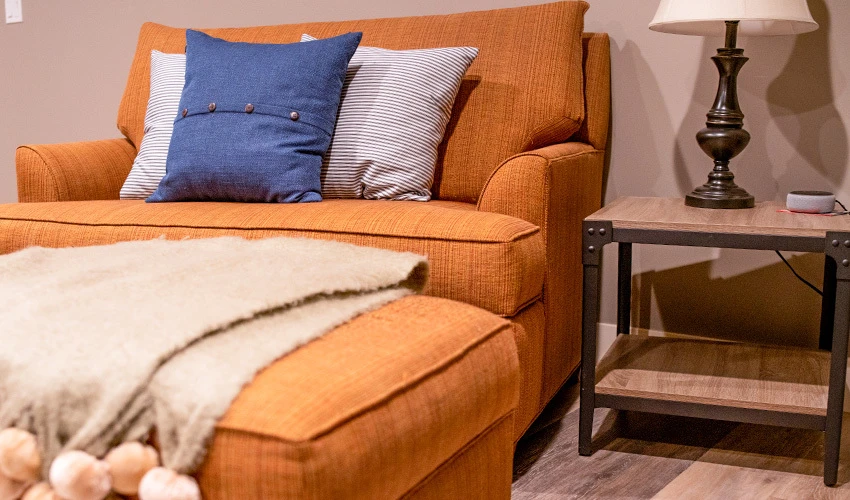Formaldehyde Air Pollution: What You Need to Know

You may recognize formaldehyde as a preservative from a high school biology class. What you may not know is that formaldehyde is a common commercial chemical used in manufacturing furniture, wood products, and carpeting. Even when present in small quantities, formaldehyde has the potential to be an irritant to the eyes, skin, nose, and throat. If it’s present in your dwelling, there is even the potential for formaldehyde air pollution.
But where can this chemical be found, and how can you mitigate it in your home? Let the HVAC and air quality experts at Aire Serv® offer some advice and helpful hints on keeping formaldehyde to a minimum!
What Is Formaldehyde?
Formaldehyde is a colorless, pungent-smelling volatile organic compound (VOC) used in manufacturing. Formaldehyde off-gasses from many manufactured products and also occurs naturally as humans and other organisms produce small amounts during the metabolic process. It can also be present as a byproduct of combustion, such when smoking tobacco products or using a gas or wood stove.
While formaldehyde may exist naturally in very small quantities, larger concentrations are frequently detected in homes. But how does this chemical find its way into your dwelling? Here are some common sources of formaldehyde exposure in the home:
Formaldehyde in Furniture
Formaldehyde is used as an adhesive for particleboard, plywood, fiberboard, and other materials that are common in modern cabinetry and furniture.
Formaldehyde in Wood
Similar to its application in furniture, it’s not uncommon to find formaldehyde in wood products. Formaldehyde is often found in building materials made of composite wood products. It’s found in adhesive for particleboard, oriented strand board (OSB), plywood, and other glued wood products. Further, formaldehyde may be found in varnishes, finishes, caulk and paint.
Formaldehyde in Fabric
Formaldehyde is frequently found in fabric. This chemical is introduced to fabric manufacturing as a resin in the finishing process to make fabrics more water- or wrinkle-resistant.
Formaldehyde Air Pollution
Formaldehyde is typically present at low levels (less than 0.03 parts per million) in indoor and outdoor air. Being exposed to a level of 0.1ppm may result in coughing, wheezing, nausea, and irritation of the eyes, nose, and throat. Formaldehyde is a carcinogen, and exposure to high levels of it (usually due to medical or occupational exposure) has been linked to some cancers. Formaldehyde is often found in higher concentrations in homes where individuals smoke indoors.
How to Limit Formaldehyde Exposure
Here are a few ways to keep exposure to off-gassing formaldehyde in the home to a minimum:
- Material Grade
Use “exterior grade” pressed-wood products in the home, as these are made with a different resin that off-gases less formaldehyde. - Furniture Materials
Before installing cabinets or buying new furniture, inquire about the formaldehyde content of the products being put in the home. There are many specialty suppliers that sell low-VOC and no-VOC furniture and cabinetry products. Choose low-VOC, no-VOC or natural wood materials to limit exposure from formaldehyde in wood. - Clothing and Textiles
Limit unnecessary exposure to formaldehyde in fabric and clothing by choosing natural fabrics from trusted manufacturers. - Air Care
Limiting smoking indoors, turning on the range hood fan when using your gas stove, and employing dehumidifiers or AC to reduce humidity levels can help keep formaldehyde levels lower.
Call Aire Serv for an Indoor Air Quality (IAQ) Assessment
In addition to all these preventative measures, one other step may be taken to determine the level of formaldehyde and other potential toxins in the air of your home: have a professional conduct an indoor air quality assessment. These tests identify if your dwelling has hazardous amounts of radon, mold, or volatile organic compounds such as formaldehyde.
If you’re concerned about formaldehyde or air quality in your home don’t delay! Call Aire Serv today at (855) 679-0011 or schedule an appointment online and breathe easy!
 Click to call
Click to call


